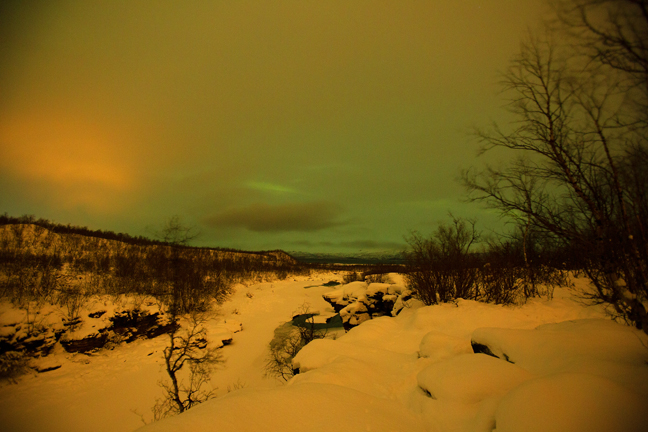

Abisko, Sweden, 121 miles north of the Arctic Circle in Lapland Province, is home to the Abisko Scientific Research Station, a center for the study of Arctic ecology and climate change adjacent to the Abiskojåkka River and LakeTorneträsk.
Abisko is located under an auroral oval, a circular belt of auroral emissions around each geomagnetic pole and therefore a prime viewing area for the Aurora Borealis (Northern Lights)
The Northern Lights are the result of collisions between gaseous particles in the Earth's atmosphere and charged particles from the sun blown towards the Earth on the 'solar wind'. The Earth's magnetic field is weaker at either pole and therefore some particles enter the Earth's atmosphere and collide with gas particles. Color variations are due to the type of gas particles that are colliding. (1/10)
©Rich Beckman
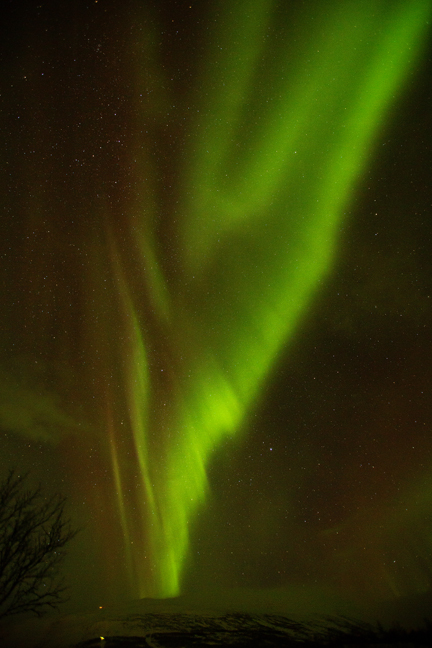

Abisko, Sweden, 121 miles north of the Arctic Circle in Lapland Province, is home to the Abisko Scientific Research Station, a center for the study of Arctic ecology and climate change adjacent to the Abiskojåkka River and LakeTorneträsk.
Abisko is located under an auroral oval, a circular belt of auroral emissions around each geomagnetic pole and therefore a prime viewing area for the Aurora Borealis (Northern Lights)
The Northern Lights are the result of collisions between gaseous particles in the Earth's atmosphere and charged particles from the sun blown towards the Earth on the 'solar wind'. The Earth's magnetic field is weaker at either pole and therefore some particles enter the Earth's atmosphere and collide with gas particles. Color variations are due to the type of gas particles that are colliding. (2/10)
©Rich Beckman
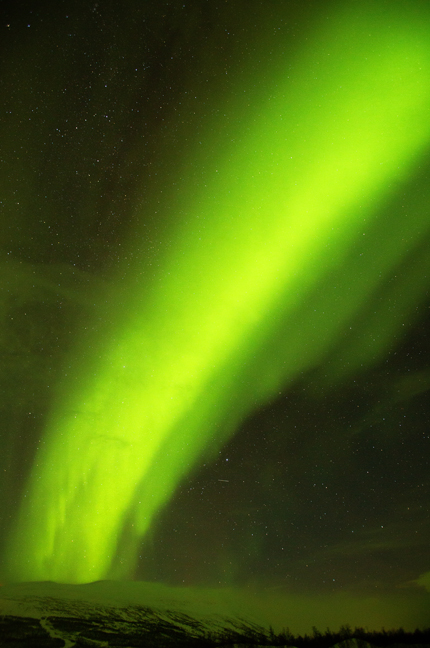

Abisko, Sweden, 121 miles north of the Arctic Circle in Lapland Province, is home to the Abisko Scientific Research Station, a center for the study of Arctic ecology and climate change adjacent to the Abiskojåkka River and LakeTorneträsk.
Abisko is located under an auroral oval, a circular belt of auroral emissions around each geomagnetic pole and therefore a prime viewing area for the Aurora Borealis (Northern Lights)
The Northern Lights are the result of collisions between gaseous particles in the Earth's atmosphere and charged particles from the sun blown towards the Earth on the 'solar wind'. The Earth's magnetic field is weaker at either pole and therefore some particles enter the Earth's atmosphere and collide with gas particles. Color variations are due to the type of gas particles that are colliding. (5/10)
©Rich Beckman
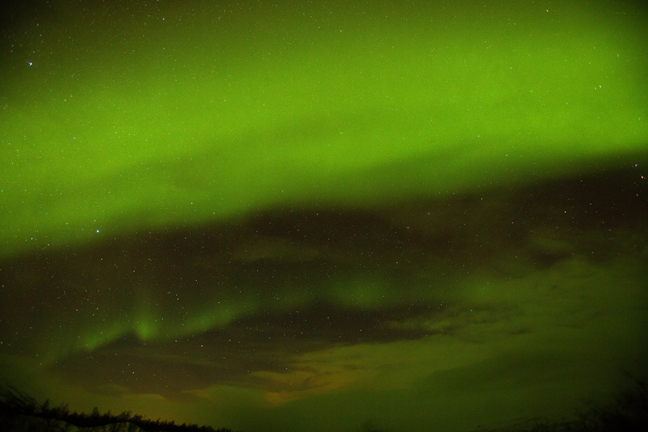

Abisko, Sweden, 121 miles north of the Arctic Circle in Lapland Province, is home to the Abisko Scientific Research Station, a center for the study of Arctic ecology and climate change adjacent to the Abiskojåkka River and LakeTorneträsk.
Abisko is located under an auroral oval, a circular belt of auroral emissions around each geomagnetic pole and therefore a prime viewing area for the Aurora Borealis (Northern Lights)
The Northern Lights are the result of collisions between gaseous particles in the Earth's atmosphere and charged particles from the sun blown towards the Earth on the 'solar wind'. The Earth's magnetic field is weaker at either pole and therefore some particles enter the Earth's atmosphere and collide with gas particles. Color variations are due to the type of gas particles that are colliding. (4/10)
©Rich Beckman


Abisko, Sweden, 121 miles north of the Arctic Circle in Lapland Province, is home to the Abisko Scientific Research Station, a center for the study of Arctic ecology and climate change adjacent to the Abiskojåkka River and LakeTorneträsk.
Abisko is located under an auroral oval, a circular belt of auroral emissions around each geomagnetic pole and therefore a prime viewing area for the Aurora Borealis (Northern Lights)
The Northern Lights are the result of collisions between gaseous particles in the Earth's atmosphere and charged particles from the sun blown towards the Earth on the 'solar wind'. The Earth's magnetic field is weaker at either pole and therefore some particles enter the Earth's atmosphere and collide with gas particles. Color variations are due to the type of gas particles that are colliding. (3/10)
©Rich Beckman
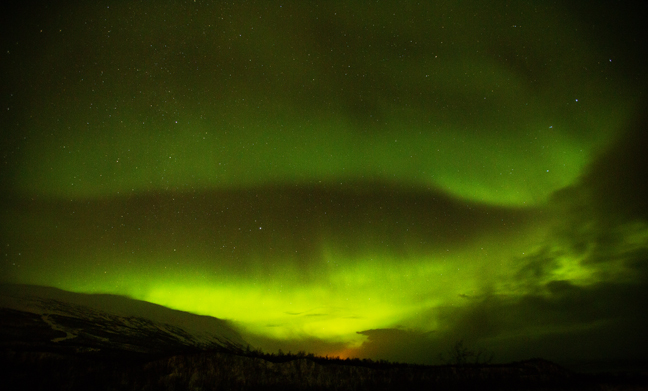

Abisko, Sweden, 121 miles north of the Arctic Circle in Lapland Province, is home to the Abisko Scientific Research Station, a center for the study of Arctic ecology and climate change adjacent to the Abiskojåkka River and LakeTorneträsk.
Abisko is located under an auroral oval, a circular belt of auroral emissions around each geomagnetic pole and therefore a prime viewing area for the Aurora Borealis (Northern Lights)
The Northern Lights are the result of collisions between gaseous particles in the Earth's atmosphere and charged particles from the sun blown towards the Earth on the 'solar wind'. The Earth's magnetic field is weaker at either pole and therefore some particles enter the Earth's atmosphere and collide with gas particles. Color variations are due to the type of gas particles that are colliding. (6/10)
©Rich Beckman
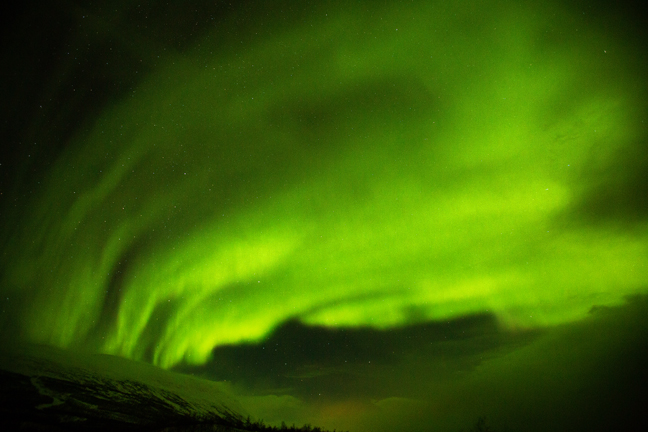

Abisko, Sweden, 121 miles north of the Arctic Circle in Lapland Province, is home to the Abisko Scientific Research Station, a center for the study of Arctic ecology and climate change adjacent to the Abiskojåkka River and LakeTorneträsk.
Abisko is located under an auroral oval, a circular belt of auroral emissions around each geomagnetic pole and therefore a prime viewing area for the Aurora Borealis (Northern Lights)
The Northern Lights are the result of collisions between gaseous particles in the Earth's atmosphere and charged particles from the sun blown towards the Earth on the 'solar wind'. The Earth's magnetic field is weaker at either pole and therefore some particles enter the Earth's atmosphere and collide with gas particles. Color variations are due to the type of gas particles that are colliding. (7/10)
©Rich Beckman
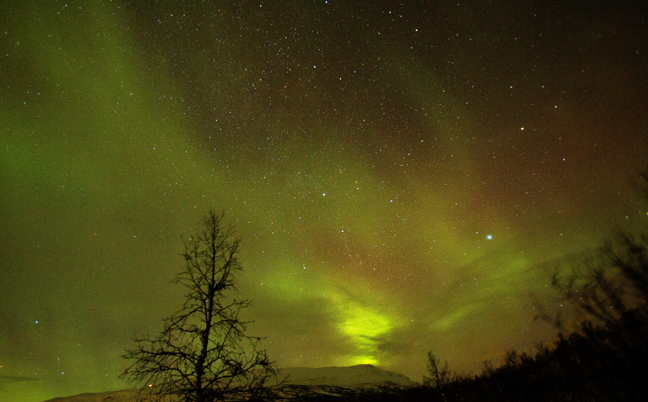

Abisko, Sweden, 121 miles north of the Arctic Circle in Lapland Province, is home to the Abisko Scientific Research Station, a center for the study of Arctic ecology and climate change adjacent to the Abiskojåkka River and LakeTorneträsk.
Abisko is located under an auroral oval, a circular belt of auroral emissions around each geomagnetic pole and therefore a prime viewing area for the Aurora Borealis (Northern Lights)
The Northern Lights are the result of collisions between gaseous particles in the Earth's atmosphere and charged particles from the sun blown towards the Earth on the 'solar wind'. The Earth's magnetic field is weaker at either pole and therefore some particles enter the Earth's atmosphere and collide with gas particles. Color variations are due to the type of gas particles that are colliding. (8/10)
©Rich Beckman
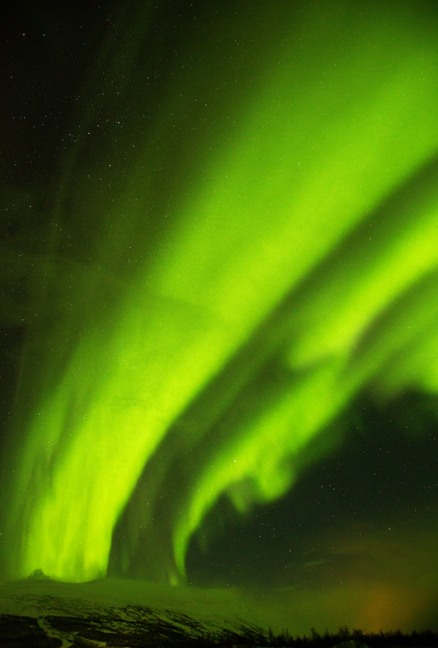

Abisko, Sweden, 121 miles north of the Arctic Circle in Lapland Province, is home to the Abisko Scientific Research Station, a center for the study of Arctic ecology and climate change adjacent to the Abiskojåkka River and LakeTorneträsk.
Abisko is located under an auroral oval, a circular belt of auroral emissions around each geomagnetic pole and therefore a prime viewing area for the Aurora Borealis (Northern Lights)
The Northern Lights are the result of collisions between gaseous particles in the Earth's atmosphere and charged particles from the sun blown towards the Earth on the 'solar wind'. The Earth's magnetic field is weaker at either pole and therefore some particles enter the Earth's atmosphere and collide with gas particles. Color variations are due to the type of gas particles that are colliding. (9/10)
©Rich Beckman
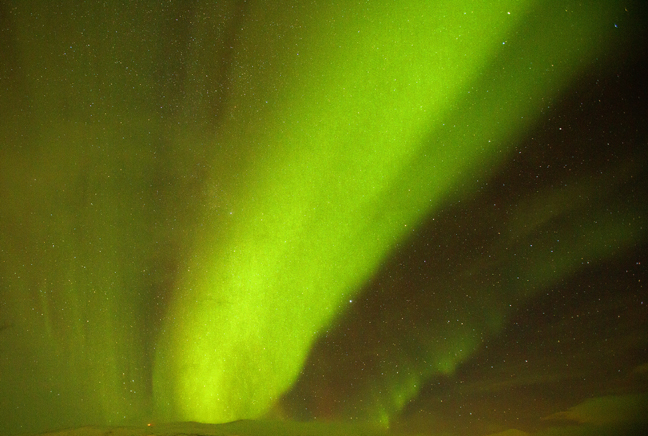

Abisko, Sweden, 121 miles north of the Arctic Circle in Lapland Province, is home to the Abisko Scientific Research Station, a center for the study of Arctic ecology and climate change adjacent to the Abiskojåkka River and LakeTorneträsk.
Abisko is located under an auroral oval, a circular belt of auroral emissions around each geomagnetic pole and therefore a prime viewing area for the Aurora Borealis (Northern Lights)
The Northern Lights are the result of collisions between gaseous particles in the Earth's atmosphere and charged particles from the sun blown towards the Earth on the 'solar wind'. The Earth's magnetic field is weaker at either pole and therefore some particles enter the Earth's atmosphere and collide with gas particles. Color variations are due to the type of gas particles that are colliding. (10/10)
©Rich Beckman